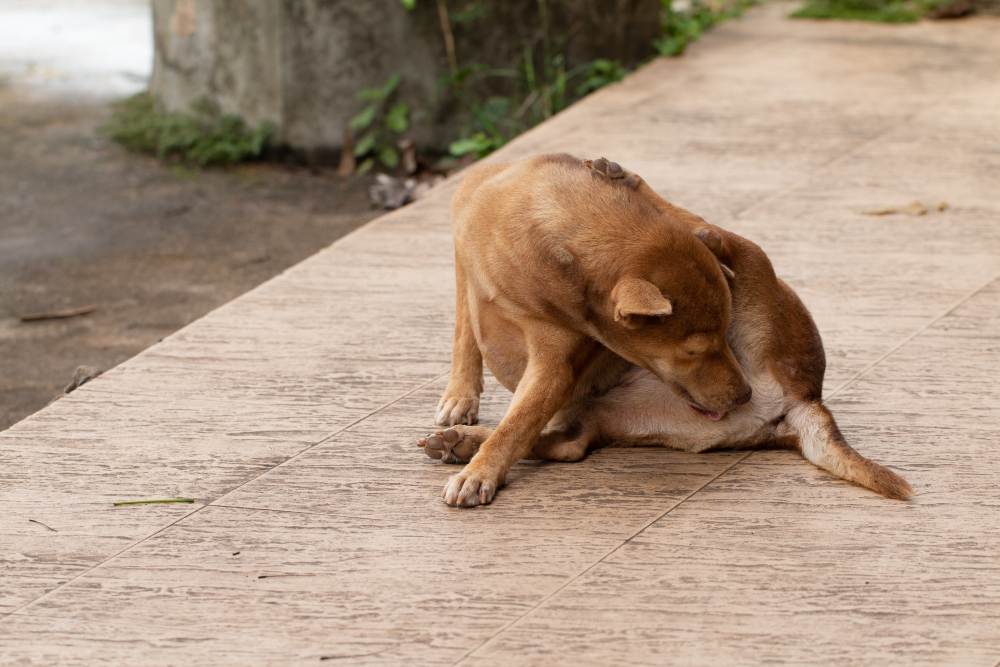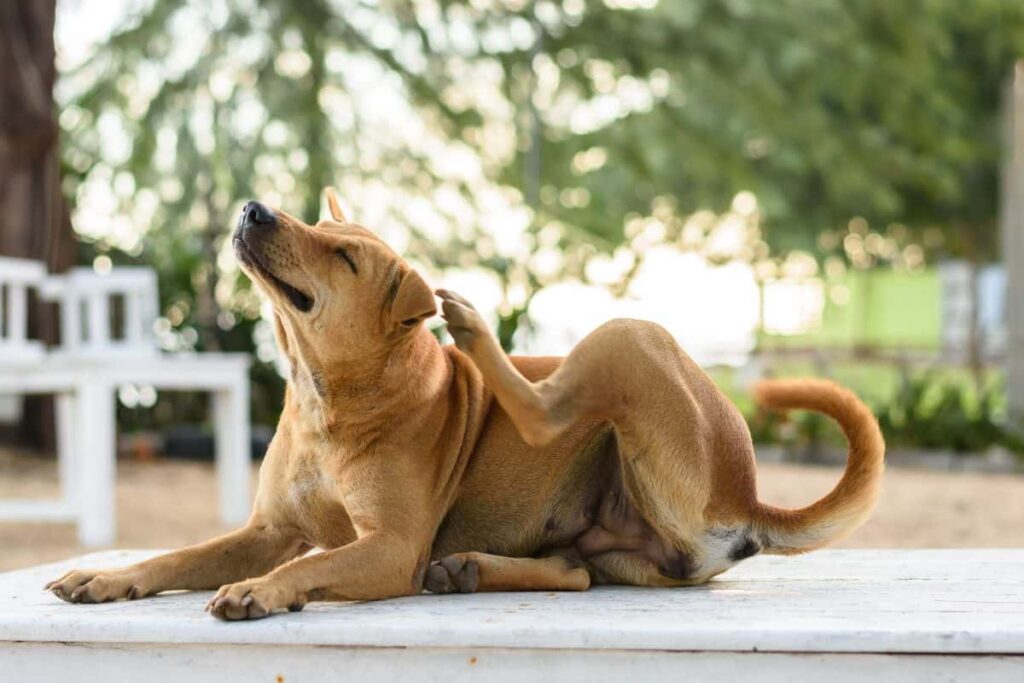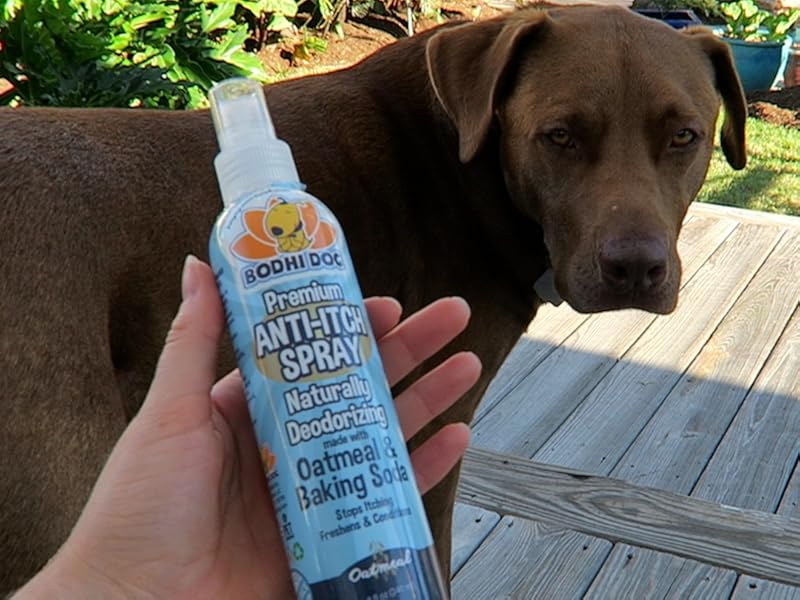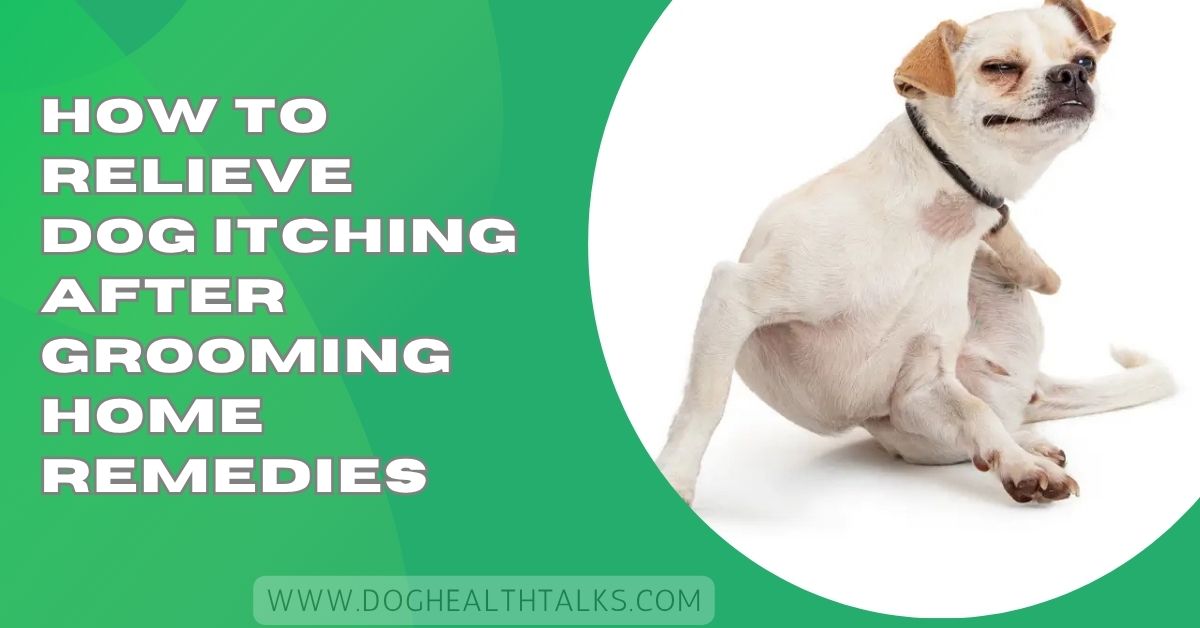You just brought your pet home from a grooming session, expecting them to look and feel fresh—but instead, they’re scratching nonstop. It’s heart-wrenching to see them uncomfortable.
Soothe your dog’s post-grooming itch naturally with oatmeal baths, aloe vera, apple cider vinegar, coconut oil, and chamomile or green tea soaks. Use mild shampoo, maintain regular grooming, support skin with fish oil, and consult your veterinarian.
In this article, you’ll learn the likely causes, nine effective home remedies, how to prevent the issue in the future, and when it’s time to call a veterinarian.
Understanding why your dog itches is the first step toward meaningful relief.
- Residual shampoo or conditioner
Even gentle or hypoallergenic products can leave film or residue if not rinsed thoroughly. That leftover residue clings and continues irritating the skin. - Clipper burn or tool irritation
Clippers that overheat, are dull, or pull skin can cause small abrasions. These tiny injuries are sources of redness and itch. - Allergic reaction to grooming products
Some dogs are sensitive to fragrances, dyes, preservatives, or botanical ingredients in shampoos, conditioners, or sprays. - Dry skin from over-bathing or hot water
Frequent bathing or using water that’s too warm strips oils from the skin, leaving it dry, flaky and itchy. - Underlying skin conditions, parasites or infections
Sometimes grooming simply reveals or aggravates existing issues: fleas, mites, yeast or bacterial imbalances. - Stress or post-grooming behavior
Some dogs scratch, lick, or rub themselves more when they feel exposed or anxious after grooming, which worsens irritation.
Once you keep these causes in mind, you’ll be able to match the remedy to the root problem more safely.

These remedies work best when the itchiness is mild to moderate, and there are no open wounds or signs of serious infection. Always test on a small skin area first and monitor your dog’s response.
- Method: Grind plain, unsalted oats into a fine powder (colloidal oatmeal). Add about 1 cup of this powder into a tub of lukewarm water. Gently immerse your dog, letting the mixture cover the itchy areas. Let him soak for 10–15 minutes, occasionally pouring the mixture over his coat.
- Why it helps: Oatmeal has anti-inflammatory and soothing compounds (avenanthramides) that calm irritated skin.
- Aftercare: Rinse gently but thoroughly to avoid residue. Pat dry—don’t rub.
- Method: Use pure, unscented aloe vera gel (no alcohol or added fragrance). Apply a thin layer directly to the itchy patches. Let it sit for 15–25 minutes. Prevent licking—use a cone or cover if needed.
- Why it helps: Aloe is cooling, anti-inflammatory, and encourages skin healing.
- Caution: The outer skin of aloe leaf (latex) can be harmful if ingested, so avoid letting your dog bite or lick treated areas.
- Method: Warm a small amount of virgin (cold-pressed) coconut oil between your palms until it melts. Gently massage into itchy regions (belly, inner legs).
- Why it helps: Coconut oil acts as a moisturizer and has mild antibacterial and antifungal properties.
- Caution: Use sparingly. Excessive oil can be greasy or cause digestion upset if licked or ingested in large amounts.
- Method: Dilute ACV with water (1 part vinegar to 2–3 parts water). Pour or spray this solution onto the coat (avoiding any broken skin), let it sit for a minute, then rinse clean.
- Why it helps: The acidity helps restore skin pH balance and has mild antibacterial and antifungal effects.
- Caution: Never use on raw or broken skin—it will sting and worsen irritation. Only apply diluted.
- Method: Brew strong chamomile or green tea (without added flavors), allow it to cool fully. Use as a rinse post-bath or soak a clean cloth and apply as a compress to hot spots or irritated areas.
- Why it helps: Tea contains anti-inflammatory and soothing tannins that calm redness.
- Caution: Ensure the tea is plain (no caffeine, essential oils, or additives).
- Method: Mix baking soda with a little water to make a paste (not runny). Apply it directly to small, itchy areas and leave for 10–15 minutes, then rinse.
- Why it helps: Baking soda helps neutralize skin pH and reduce itch locally.
- Caution: Do not use on large areas or broken skin.
- Method: Wet a soft cloth with cool water (not icy), wring out, and gently press against sensitive or hot areas for a few minutes, repeating as needed.
- Why it helps: Provides immediate relief by reducing heat and calming inflamed skin.
- Method: Consult your veterinarian and, if approved, introduce a high-quality omega-3 supplement (e.g. fish oil) into your dog’s diet.
- Why it helps: Omega-3 fatty acids support skin barrier repair and reduce systemic inflammation. Over time, this can reduce how itchy your dog becomes.
- Caution: Don’t add random supplements without veterinary guidance—dosage, purity, and interactions matter.
- Recipe idea: Combine 1 cup of distilled water, ½ cup cooled chamomile tea, and 1–2 tablespoons of diluted apple cider vinegar (plus a teaspoon of aloe juice or a drop of coconut oil). Shake well and spray lightly on itchy areas.
- Why it helps: Combines multiple soothing ingredients in a gentle mist form.
- Caution: Test on a patch first. Don’t use on broken skin.

Relief is important—but preventing the itch in the first place is even better.
- Use gentle, fragrance-free, pH-balanced shampoos
Choose products made for dogs with sensitive skin. Avoid human shampoos or heavy fragrances. - Rinse thoroughly (double-rinse rule)
After shampooing, rinse once, then rinse again to ensure no residue remains. - Maintain sharp, cool grooming tools
Keep clippers cooled and blades clean and sharp to avoid burns or scraping. - Don’t shave too close
Leave a bit of coat to protect the skin, especially in delicate zones. - Dry carefully
Use a towel or low-heat dryer. Avoid hot air too close to the skin. Trapped moisture can foster irritation or infection. - Moisturize after grooming
Use light, pet-safe moisturizers (like coconut oil or aloe) sparingly right after grooming to lock in hydration. - Avoid excessive grooming or bathing
Frequent baths strip natural oils. The right frequency depends on breed, coat, and skin. Many experts suggest every 3–6 weeks for most dogs. - Patch-test any new product
Apply new shampoo or spray behind the ear or belly 24 hours before full use to check for reactions. - Keep your dog’s environment clean
Minimize allergens (dust, pollen) in your home, use flea/parasite control, and wash bedding often. - Watch diet & hydration
A balanced diet with essential nutrients, vitamins, and good hydration supports skin health.
While home remedies help many dogs, some signs indicate that medical attention is needed:
- The itching persists beyond 2–3 days or worsens.
- Redness, swelling, pus, crusting, bleeding or open sores.
- Hair loss or bald patches developing.
- Behavioral changes: lethargy, loss of appetite, whining, hiding.
- Possible underlying conditions: dermatitis, allergies, parasitic infection, fungal or bacterial infection.
- Discomfort that seems disproportionate to what you’d expect from grooming.
Veterinarians may prescribe medicated shampoos, oral antihistamines, steroids, antibiotics, or allergy testing depending on the root cause. Prompt veterinary care protects the skin from further damage and infection.
Use gentle natural remedies like oatmeal baths, aloe vera gel, or coconut oil to calm your dog’s skin. Chamomile or green tea soaks also help. Always rinse shampoo well and keep their skin moisturized.
You can apply aloe vera, coconut oil, or diluted apple cider vinegar to soothe itching. Oatmeal paste or a cool compress works great too. Make sure your dog doesn’t lick the area while it heals.
Mild itching after grooming usually lasts a few hours to two days. If your dog keeps scratching longer, or the skin looks red or sore, contact your vet to check for allergies or irritation.

Mix one cup of cooled chamomile tea, half a cup of water, and one tablespoon of aloe vera or apple cider vinegar. Shake well and spray lightly on itchy spots. Avoid spraying on open wounds.
Give your dog a soothing oatmeal bath, apply aloe vera, and use mild shampoo next time. Keep them comfortable with a cool compress and make sure all grooming products are rinsed out completely.
If your dog’s private area is red or sore after grooming, rinse gently with cool water and apply aloe vera or coconut oil. Avoid perfumed products, keep the area dry, and see a vet if swelling appears.
Yes, mild itching after grooming is normal. It can happen from dry skin, shampoo residue, or clippers. It should fade within a day or two.
Use natural remedies like aloe vera, coconut oil, or oatmeal paste. These soothe skin safely. Avoid human lotions with perfume or chemicals on dogs.
Give your dog an oatmeal bath, apply aloe vera, and use mild shampoo next time. A cool compress helps calm clipper irritation fast.
Avoid most human creams. Use plain aloe vera gel or coconut oil instead. Ask your vet before applying any medicated or human skincare products.
Clipper burn usually heals in three to five days with gentle care. Keep the area clean, apply aloe vera, and stop your dog from licking.
Yes, but only under vet guidance. Benadryl can ease itching, but dosage depends on weight and condition. Always ask your veterinarian before giving medicine.
Some dogs act tired or anxious for a few hours after grooming. Comfort them, give treats, and they’ll usually feel normal by the next day.
Apply aloe vera or coconut oil to soothe the burn. Keep the area clean, dry, and prevent licking. Use a vet-approved healing spray if needed.
Itching after grooming can be distressing, but often it’s manageable with patience, safe remedies, and preventive care. Use the steps above to calm your dog’s skin, monitor results, and adjust your grooming routine. If symptoms don’t improve or worsen, don’t hesitate to consult a vet.
Your dog deserves comfort, not constant scratching. With gentle care and attention, grooming will be a pleasant experience—not one that leaves them miserable.
